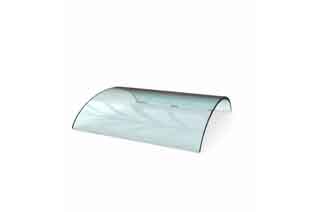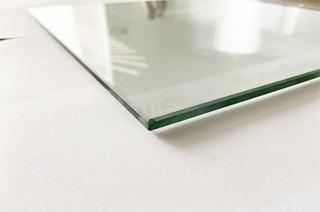Well-shaped curved glass as a material brings several key benefits, which will enrich any architectural design.
1. Aesthetics
Curved glass is an aesthetic winner. The flexibility and fluidity of this amazing material allow an unprecedented level of creativity in structural design. Under the guidance of an experienced glass manufacturer, curved glass is a highly adaptable material with almost unlimited opportunities, talents, and also provides important structural capabilities. The execution of the perfect curve allows architects to freely explore more organic and fluid concepts.
2. Strength and durability
The curvature of the curved glass plate makes it have a high degree of load resistance. When the engineering design is correct, the arch structure can even minimize the deflection. This makes it an excellent structural application where mechanical strength and durability are necessary. The careful design of curved glass can even reduce the use of other building materials, otherwise, the integrity of the structure needs to be maintained. In some cases, this can even reduce construction costs.
Curved glass can also be further strengthened by a process called tempering. In addition to improving its general durability, this also prevents temperature changes.
3. Transparency
Due to its inherent transparency, curved glass is a creative way to enrich the natural light of the building. The properly placed curved glass allows light to enter and pass through the building or structure, which is not only popular with people inside the building but also reduces the perception of external material quality. Using curved glass instead of standard flat glass means that architects can use light flow to create interesting effects or maximize natural light penetration. The presence of natural light in the building creates a more comfortable environment for people living or working, and also helps to reduce energy consumption, especially when a special thermal coating is applied to the glass.
Curved Toughened Glass is made by heating annealed glass to approximately 700 degrees Celsius and then rapidly cooling the outer surface. This process makes the glass very strong and impact-resistant, and thus longer lasting.
To integrate curved glass into architectural design, what do you need to know?
Curved glass is a complex material, and it must be thoroughly understood in order to successfully integrate it into architectural design. Before applying curved glass to architectural solutions, you need to understand several key aspects.
Manufacturing parameters
The first stop of the visit should be an in-depth discussion with the glass manufacturer of your choice. This will allow you to fully understand and incorporate the strength of the material into the design, evaluate any restrictive functions, and design the structure in the most economical way.
How do you want to accomplish it?
A clear understanding of the possible aesthetic finishes, such as glass tones, digital ceramic printing, multi-panel laminates, double glazing, or any necessary architectural standards, will help you make informed design decisions. Once again, an experienced glass manufacturer should be able to tell you what opportunities there are to enhance your curved glass design project and suggest to you the best solution to meet any requirements.
Measuring
When designing a structure that includes curved glass, it is also important to have a clear understanding of the angle and radius you need. Matching these requirements with precise materials and manufacturing capabilities early in the design process will help eliminate any costly design changes. This also means that the manufacturing of curved glass can be automated as much as possible to reduce manufacturing costs. If you are afraid of measurement errors, especially when curved glass panels require a structure suitable for hand-built, it may be worth investing in professional help.



没有评论:
发表评论